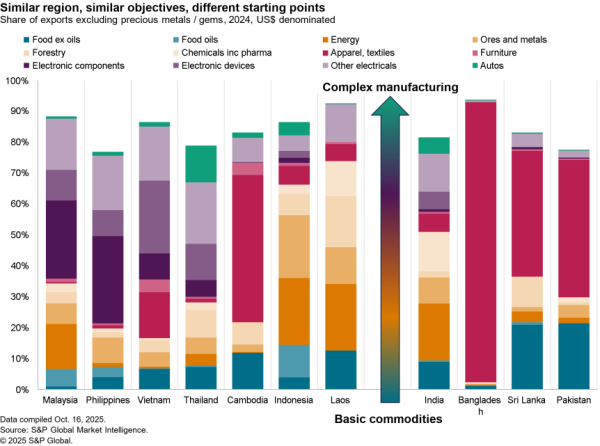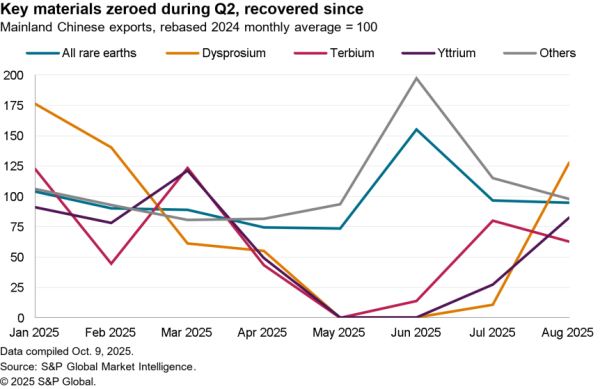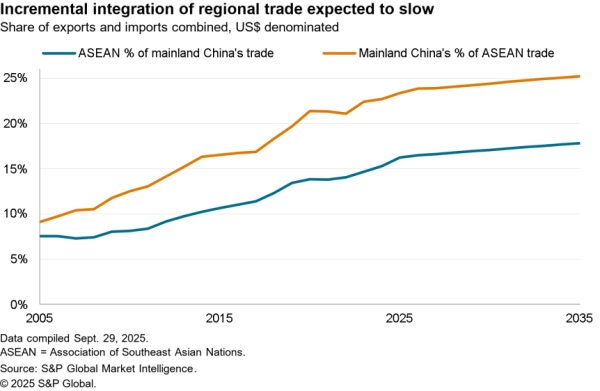President Biden’s first 100 days in office have been focused more on the details of supply chain operations than the generalities of trade deals but have nonetheless set to tone and agenda items that will steer the policy framework for supply chains for the remainder of the Biden administration.
Trade activity in Biden’s first three months has largely been a result of his predecessor’s economic policies, though the passage of a stimulus package (the American Rescue Plan) may have contributed to importers’ willingness to accelerate shipments.
Panjiva’s analysis of official data shows that total U.S. trade activity in March surged 17.0% year over year, including an 11.5% rise in exports (the first improvement since December 2019) and a 20.6% surge in imports. The latter has been led by a boom in consumer goods, which jumped 37.5% higher.
Some care is needed though as the impact of the pandemic began to be felt in March 2020. When compared to 2019 exports rose by just 1.4% while imports increased by 9.6%. The advance goods deficit nonetheless rose above $90 billion (to $90.6 billion) for the first time.

Source: Panjiva
The signature event was the launch of a 100-day review of critical supply chains, scheduled to be completed in early June as outlined in Panjiva’s research of Feb. 26, which focuses on pharmaceutical ingredients, strategically important minerals, large-scale batteries and semiconductors.
The availability of semiconductors has become increasingly fraught during Q1’21 with most automakers having to pause production around the world for periods between days and weeks as well as considering alternative strategies such as decontenting. Resolving the shortages will likely take most of the remainder of the year though the administration has already convened semiconductor makers and auto producers to look for solutions.
The impact of the shortfall is only just being felt in U.S. trade in autos. While total U.S. exports and imports of automotive products increased by 15.4% and 8.3% respectively in March they were down by 8.4% and 5.1% versus March 2019. On a daily average basis exports were down by 1.9% and imports by 5.5% in March versus the prior three months’ average.

Source: Panjiva
The proposed infrastructure plan (the American Jobs Act), a second major supply chain-relevant action, will include $50 billion of funding to support onshoring of semiconductor manufacturing as well as a further $50 billion to support manufacturing onshoring more broadly. Indeed, President Biden has referred to the Act as being “guided by one principle: ‘Buy American.'”
A steady shift towards firm industrial policies may take much of the rest of 2021 to put into place and risks competition from other countries. Biden’s early days have been accompanied by the more comprehensive 14th Five Year Plan from China as well as semiconductor-centric actions by the EU, India and Japan.
The continuation of the pandemic has also kept medical supply chains in focus, with the Biden administration initially refusing to export vaccines before agreeing to loan doses to Canada and Mexico. India has flagged apparent restrictions in active pharmaceutical ingredient exports.
More recently though the administration has: allowed the export of pharmaceutical ingredients (which had only been effectively, not formally blocked by the Defense Production Act); discussed the potential to produce additional vaccines for exports rather than release intellectual property under the WTO TRIPS process; and approved the export distribution of 60 million doses of the AstraZeneca vaccine. It remains to be seen whether recent leniency or a return to the Americans-first vaccine approach is the sustainable policy.
The export of AstraZeneca vaccines may well prioritize Canada and Mexico under a previously discussed “loan” program. Panjiva’s data shows Mexican imports of vaccines only increased by 2.6% year over year in January and February combined, helped by imports linked to AstraZeneca and Pfizer which accounted for 43.4% of shipments.

Source: Panjiva
On the trade policy front, the administration has been in review mode, with the new appointed U.S. Trade Representative, Katherine Tai, and Commerce Secretary Gina Raimondo both committed to leaving existing tariff measures in place both against China and other special programs including steel, solar panels and washing machines.
The phase 1 trade deal with China has also been left in place, though the six-monthly review due in February does not appear to have been published. It’s also worth noting that the deal, which committed China to policy shifts and significant goods purchasing in return for U.S. rolling back tariffs, will lapse at the end of 2021 unless renewed.
Panjiva’s analysis shows U.S. exports covered the phase 1 deal are still well below target in March, with shipments of the 548 products covered reaching $9.17 billion compared to a 2020 target of $11.93 billion and a 2021 target of $14.8 billion.
Exports of agricultural products reached $2.00 billion, a 40.78% increase versus March 2017 (the baseline year for the deal) and the greatest value of exports for the month since at least 2015. Exports of energy reached $1.26 billion, a 158% increase versus 2017 but still only 36.5% of the level required by the deal.
Shipments of manufactured products meanwhile were worth $5.91 billion, up by 40.3% versus 2017 on the strength of a 296% increase in pharmaceuticals and a 60.7% rise in optical and medical instrument shipments.

Source: Panjiva
Deals that were underway with the U.K. and Brazil by the Trump administration have been slow-walked, while a limited-scope cooperation agreement with Japan may be a sign of the road ahead. Unless the Biden administration calls for a renewal of Trade Promotion Authority by July it’s unlikely that any new trade agreements will be reached during the administration.
That’s not to say that lower-key, tariff-reducing deals in the aerospace sector with the EU and U.K. aren’t possible after a pause in tariff hostilities was agreed. A permanent solution will help both the hard-pressed aerospace industry as well as British exporters that have been struggling as a result of Brexit.
There’s yet to be a boom in shipments though, with U.S. imports of products covered by the U.S. tariffs retaliating against British subsidies still being 14.0% lower than a year earlier in February, though a 15.0% rise in shipments of food including cheese and biscuits is a sign of the potential recovery.
Additionally, there’s likely to be continued multilateral engagement with a reconnection with the World Trade Organization – possibly starting with the vaccine issues noted above – bringing the prospect of reform to dispute settlements later in 2021.
The launch of consultations on potential section 301 tariffs linked to digital services taxes being implemented by six countries may provide leverage heading into OECD discussions on the topic later in the year.
Extended commitments to reduce carbon emissions made during the 40-nation climate summit will provide opportunities for supply chains covering renewable energy and autos while presenting challenges for the logistics and basic metals industries.
They will potentially come at the cost of carbon pricing systems, including cap-and-trade or carbon taxes, as well as the prospect of carbon border adjustable taxes (i.e. tariffs) that will add global consequences to the administration’s domestic emissions policies.

Source: Panjiva




